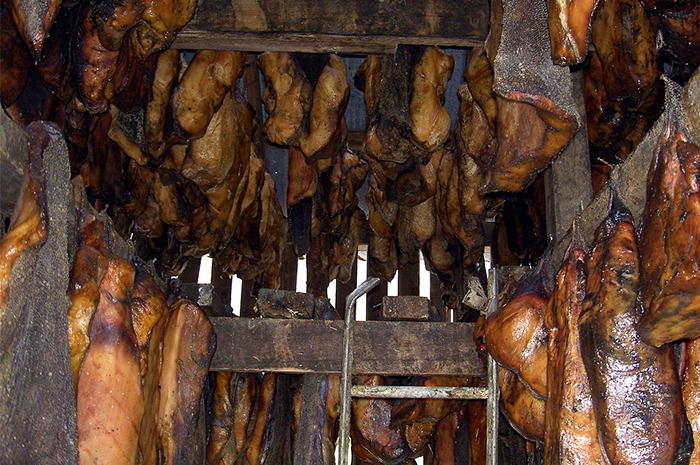Iceland Is The World's Healthiest Country, — But Their National Dish Might Make You Throw Up
The United Nations recently released the results of a comprehensive decade-long study ranking 188 countries according to their success in meeting 33 health goals, and found that Iceland took the top spot (the U.S. came in at number 28). But while Iceland might technically be the world's healthiest country, their most distinctive native dish might well make non-Icelanders sick to their stomach.
Kæstur hákarl, which translates to "treated shark," is considered the national dish of Iceland. The Norse settlers who migrated to the island from mainland Scandinavia in the ninth century relied on an abundant supply of Greenland shark to survive the agriculturally barren winters. The shark's flesh is naturally poisonous when consumed fresh due to the high amounts of urea and trimethylamine oxide it contains. To detoxify it, Icelandic settlers developed a method of curing and fermentation. The shark is first buried underground, beneath heavy stones, for up to three months, to press out the moisture. Afterwards, the shark is sliced into chunks, hung, and dried for another four to five months, until it is sufficiently preserved. At this point it is safe to eat — but whether it's palatable is a matter of taste.
After its processing, the shark smells of ammonia, which non-locals find repulsive. Even culinarians have difficulty choking the stuff down. Television personality Anthony Bourdain, who has been known to eat cobra heart and maggot fried rice, once called hákarl "the single worst, most disgusting and terrible tasting thing," and Travel Channel's Andrew Zimmerman, no stranger to bizarre foods himself, said that the smell reminded him of, "some of the most horrific things I've ever breathed in my life."
